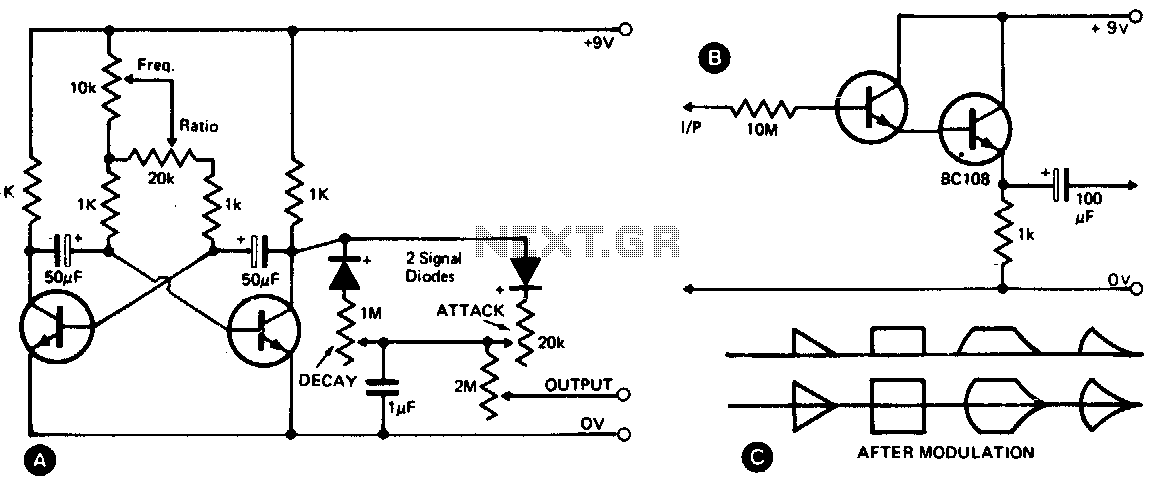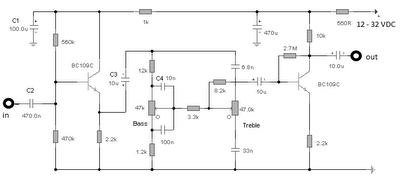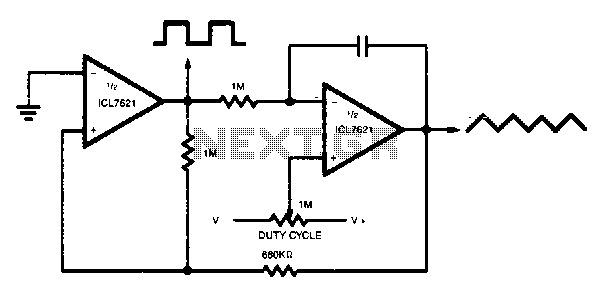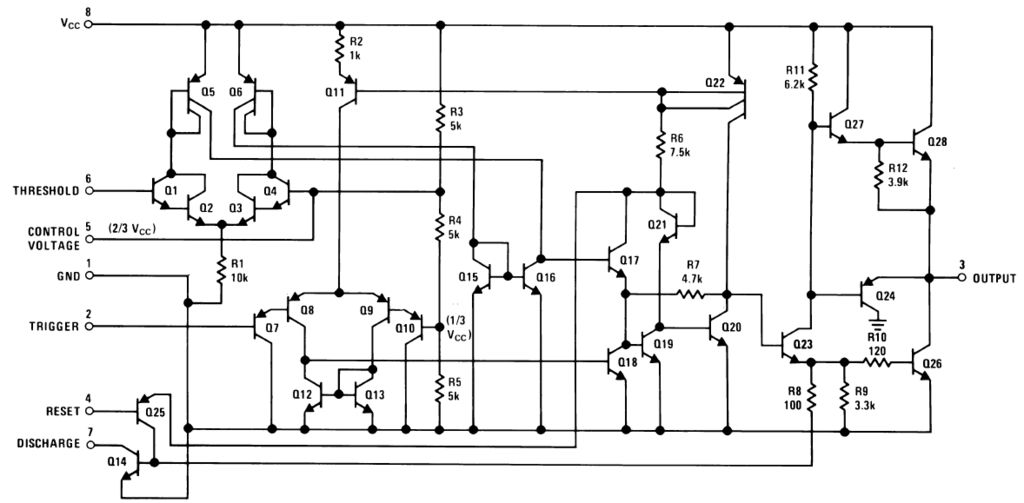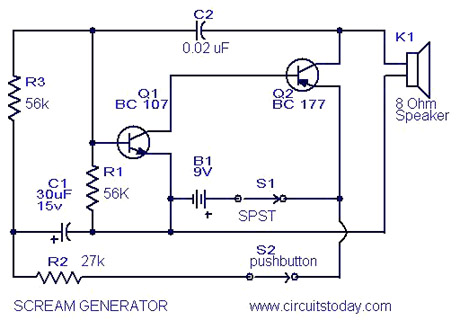
Tone Generator with 555
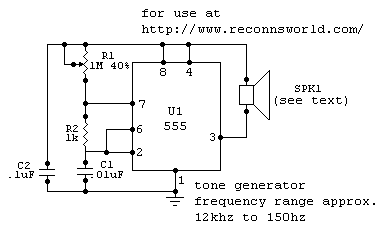
this tone generator can be used to control your robot. you will need to use the tone decoder for this. to widen the range, higher or lower - substitute a higher, or lower valued capacitor for c1. for frequencies about 5khz and 15khz, use a piezoelectric element as the speaker. Use a miniature speaker for frequencies under 5khz, and use an ultrasonic transducer for frequencies over 30khz. More: all resistors are 5 or 10 percent tolerance, 1/4-watt all capacitors are 10 percent tolerance, rated 35 volts or higher.
The tone generator circuit is designed to produce audio signals that can be utilized for controlling robotic systems. The operation of this circuit relies on a tone decoder, which interprets the generated tones and translates them into commands for the robot.
To achieve a desired frequency range, the circuit incorporates a variable capacitor, designated as C1. By substituting C1 with a capacitor of different capacitance value, the frequency output can be adjusted to either higher or lower ranges. For generating tones within the range of approximately 5 kHz to 15 kHz, a piezoelectric element is recommended as the output speaker. This component is effective for producing clear tones in this frequency range.
For lower frequencies, specifically those below 5 kHz, a miniature speaker is preferred, as it is better suited for producing sound in this range without distortion. Conversely, for applications requiring frequencies above 30 kHz, an ultrasonic transducer should be utilized. This type of transducer is capable of generating sound waves beyond the audible range, which can be beneficial for certain robotic applications, such as ultrasonic sensing.
The circuit components are selected with specific tolerances to ensure reliability and performance. All resistors used in the circuit are rated at either 5% or 10% tolerance and are capable of handling a power rating of 1/4 watt. Additionally, all capacitors have a tolerance of 10% and are rated for voltages of 35 volts or higher to ensure safe operation within the circuit. Proper selection and arrangement of these components are crucial for the effective functioning of the tone generator.this tone generator can be used to control your robot. you will need to use the tone decoder for this. to widen the range, higher or lower - substitute a higher, or lower valued capacitor for c1. for frequencies about 5khz and 15khz, use a piezoelectric element as the speaker. Use a miniature speaker for frequencies under 5khz, and use an ultrasonic transducer for frequencies over 30khz. all resistors are 5 or 10 percent tolerance, 1/4-watt all capacitors are 10 percent tolerance, rated 35 volts or higher 🔗 External reference
The tone generator circuit is designed to produce audio signals that can be utilized for controlling robotic systems. The operation of this circuit relies on a tone decoder, which interprets the generated tones and translates them into commands for the robot.
To achieve a desired frequency range, the circuit incorporates a variable capacitor, designated as C1. By substituting C1 with a capacitor of different capacitance value, the frequency output can be adjusted to either higher or lower ranges. For generating tones within the range of approximately 5 kHz to 15 kHz, a piezoelectric element is recommended as the output speaker. This component is effective for producing clear tones in this frequency range.
For lower frequencies, specifically those below 5 kHz, a miniature speaker is preferred, as it is better suited for producing sound in this range without distortion. Conversely, for applications requiring frequencies above 30 kHz, an ultrasonic transducer should be utilized. This type of transducer is capable of generating sound waves beyond the audible range, which can be beneficial for certain robotic applications, such as ultrasonic sensing.
The circuit components are selected with specific tolerances to ensure reliability and performance. All resistors used in the circuit are rated at either 5% or 10% tolerance and are capable of handling a power rating of 1/4 watt. Additionally, all capacitors have a tolerance of 10% and are rated for voltages of 35 volts or higher to ensure safe operation within the circuit. Proper selection and arrangement of these components are crucial for the effective functioning of the tone generator.this tone generator can be used to control your robot. you will need to use the tone decoder for this. to widen the range, higher or lower - substitute a higher, or lower valued capacitor for c1. for frequencies about 5khz and 15khz, use a piezoelectric element as the speaker. Use a miniature speaker for frequencies under 5khz, and use an ultrasonic transducer for frequencies over 30khz. all resistors are 5 or 10 percent tolerance, 1/4-watt all capacitors are 10 percent tolerance, rated 35 volts or higher 🔗 External reference
